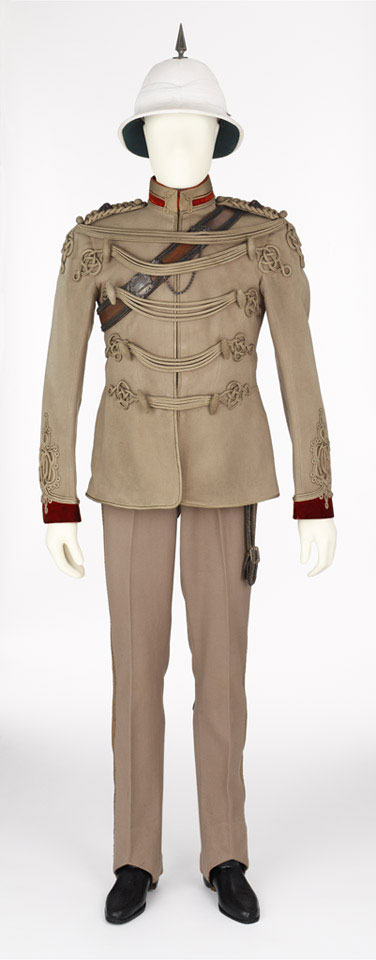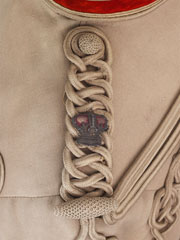
Online Collection
« Prev - 1 of 1 results - Next »
Full dress uniform worn by Major-General C J B Hay, The Queen's Own Corps of Guides, Punjab Frontier Force Infantry, 1903 (c)
The Corps of Guides, consisting of both Cavalry and Infantry, was raised at Peshawar on 14 December 1846 by Lieutenant Harry Bernett Lumsden. Lumsden, realising how impractical Army uniforms were, both for ease of movement and camouflage, obtained vast quantities of cotton fabric which was dyed by the Indian method of using river mud. The result was a loose fitting uniform which, because of the yellowish dust-colour of the fabric, provided useful camouflage. The Indian word for dust was khaki and was adopted for this innovative colour for uniforms.
Lumsden and the Corps of Guides are credited with being the first to wear khaki which after the Boer War (1899-1902) became the universal service wear for most of the world's forces. Although a more European style of dress was adopted by the officers after the Indian Mutiny (1857-1859), a light-coloured version of khaki, known as 'drab', continued to be worn both in full and undress by the Corps of Guides.
NAM Accession Number
NAM. 1951-12-55--1
Copyright/Ownership
National Army Museum Copyright
Location
National Army Museum, Global Role gallery
Object URL
https://collection.nam.ac.uk/detail.php?acc=1951-12-55--1





